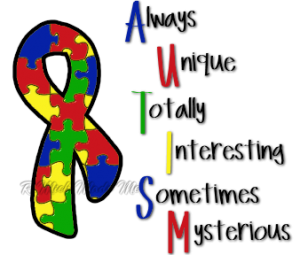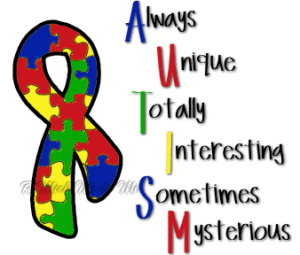Since I am Asperger’s I have had trouble getting along and really relating to so called normal or neural typical people. Being Asperger’s we are different, even though I am a brainiac per se, I still think differently. I find that we are more honest, more direct, and do not have filters. I have had employers who do not understand or seem to even understand the differences.
https://askjan.org/media/asperger.html
JAN’s Accommodation and Compliance Series is designed to help employers determine effective accommodations and comply with Title I of the Americans with Disabilities Act (ADA). Each publication in the series addresses a specific medical condition and provides information about the condition, ADA information, accommodation ideas, and resources for additional information.
The Accommodation and Compliance Series is a starting point in the accommodation process and may not address every situation. Accommodations should be made on a case by case basis, considering each employee’s individual limitations and accommodation needs. Employers are encouraged to contact JAN to discuss specific situations in more detail.
For information on assistive technology and other accommodation ideas, visit JAN’s Searchable Online Accommodation Resource (SOAR) at http://AskJAN.org/soar.
Information about Asperger Syndrome
What is Asperger Syndrome?
Asperger Syndrome is one of several categories of autism spectrum conditions (DSM-IV, 1994). These conditions are expected to be combined into one autism spectrum category in the near future. The rationale for this proposed revision is that because autism is defined by a common set of behaviors, it is best represented as a single diagnostic category (DSM 5 Development, 2010). Therefore, discussion of Asperger Syndrome should be understood as relating to the autism spectrum generally.
Characteristics of Asperger Syndrome and other autism spectrum conditions include strong focused interests, social and communication differences, unusual sensory processing, atypical and repetitive physical movements, and motor skills difficulties (dyspraxia). These characteristics have been consistently noted throughout the history of the research literature on autism spectrum conditions (Sanders, 2009).
What causes Asperger Syndrome?
The cause of Asperger Syndrome is unknown. Evidence points to genetic factors playing a prominent role, and many research studies have focused on genetic factors (NIMH, 2006). A comprehensive review of studies addressing possible perinatal influences concluded that no single cause can be identified (Gardener et al., 2011).
How is Asperger Syndrome treated?
Although no specific treatment is necessary for Asperger Syndrome in and of itself, medications may be prescribed for co-occurring conditions such as anxiety and depression, which are more often found in people on the autism spectrum than in the general population (NIMH, 2006). Counseling and behavioral therapy may be helpful in such areas as time management, goal-setting, and decision-making (NIMH, 2006).
Asperger Syndrome and the Americans with Disabilities Act
Is Asperger Syndrome a disability under the ADA?
The ADA does not contain a list of medical conditions that constitute disabilities. Instead, the ADA has a general definition of disability that each person must meet on a case by case basis (EEOC Regulations . . . , 2011). A person has a disability if he/she has a physical or mental impairment that substantially limits one or more major life activities, a record of such an impairment, or is regarded as having an impairment (EEOC Regulations . . . , 2011).
However, according to the Equal Employment Opportunity Commission (EEOC), the individualized assessment of virtually all people with autism spectrum conditions, including Asperger Syndrome, will result in a determination of disability under the ADA; given its inherent nature, Asperger Syndrome will almost always be found to substantially limit the major life activity of brain function (EEOC Regulations . . . , 2011).
For more information about how to determine whether a person has a disability under the ADA, visithttp://AskJAN.org/corner/vol05iss04.htm.
Accommodating Employees with Asperger Syndrome
(Note: People with Asperger Syndrome may experience some of the limitations discussed below, but seldom develop all of them. Also, the degree of limitation will vary among individuals. Be aware that not all people with Asperger Syndrome will need accommodations to perform their jobs and many others may only need a few accommodations. The following is only a sample of the possibilities available. Numerous other accommodation solutions may exist.)
Questions to Consider:
- What limitations does the employee with Asperger Syndrome experience?
- How do these limitations affect the employee’s job performance?
- What specific job tasks are problematic as a result of these limitations?
- What accommodations are available to reduce or eliminate these problems? Are all possible resources being used to determine accommodations?
- Can the employee with Asperger Syndrome provide information on possible accommodation solutions?
- Once accommodations are in place, would it be useful to meet with the employee with the Asperger Syndrome to evaluate the effectiveness of the accommodations and to determine whether additional accommodations are needed?
- Do supervisory personnel and employees need training regarding Asperger Syndrome?
Accommodation Ideas:
- Speaking/Communicating:
- Individuals with Asperger Syndrome may have difficulty communicating with co-workers or supervisors.
- Provide advance notice of topics to be discussed in meetings to help facilitate communication
- Provide advance notice of date of meeting when employee is required to speak to reduce or eliminate anxiety
- Allow employee to provide written response in lieu of verbal response
- Allow employee to have a friend or coworker attend meeting to reduce or eliminate the feeling of intimidation
- Time Management:
- Individuals with Asperger Syndrome may experience difficulty managing time. This limitation can affect their ability to complete the task within a specified timeframe. It may also be difficult to prepare for, or to begin, work activities.
- Divide large assignments into several small tasks
- Set a timer to make an alarm after assigning ample time to complete a task
- Provide a checklist of assignments
- Supply an electronic or handheld organizer, and train on how to use effectively
- Use a wall calendar to emphasize due dates
- Atypical Body Movements:
- Individuals with Asperger Syndrome may exhibit atypical body movements such as fidgeting. Atypical body movements are sometimes called stimulatory behavior, or “stimming.” These body movements often help calm the person or assist them in concentrating on tasks, but can also disturb co-workers at times.
- Provide structured breaks to create an outlet for physical activity
- Allow employee to use items such as hand-held squeeze balls and similar objects to provide sensory input or calming effect
- Allow the employee to work from home
- Schedule periodic rest breaks away from the workstation
- Review conduct policy with employee
- Provide private workspace where employee will have to room to move about and also not disturb others by movements such as fidgeting
- Company Structure, Conduct Policy, and Discipline:
- Individuals with Asperger Syndrome may not be familiar with or understand abstract concepts like corporate structure, hierarchies of responsibility, reporting requirements, and other structural elements of the workplace.
- Explain corporate structure to employee, using visual charts and clear descriptions of positions and reporting structure. Do not assume that employee will understand structure from a simple chart of job titles
- Review conduct policy with employee
- Adjust method of supervision to better prepare employee for feedback, disciplinary action, and other communication about job performance
- Provide concrete examples to explain expected conduct
- Provide concrete examples to explain consequences of violating company policy
- Use services of the Employee Assistance Program (EAP) if available
- Stress Management:
- Individuals with Asperger Syndrome may have difficulty managing stress in the workplace. Situations that create stress can vary from person to person, but could likely involve heavy workloads, unrealistic timeframes, shortened deadlines, or conflict among coworkers.
- Provide praise and positive reinforcement
- Refer to EAP
- Allow employee to make telephone calls for support
- Provide sensitivity training for workforce
- Allow the presence and use of a support animal
- Modify work schedule
- Maintaining Concentration:
- Individuals with Asperger Syndrome may experience decreased concentration. People with Asperger Syndrome report intolerance to distractions such as office traffic, employee chatter, and common office noises such as fax tones and photocopying.
- To reduce auditory distractions:
- Purchase a noise canceling headset
- Hang sound absorption panels
- Provide a white noise machine
- Relocate employee’s office space away from audible distractions
- Redesign employee’s office space to minimize audible distractions
- To reduce visual distractions:
- Install space enclosures (cubicle walls)
- Reduce clutter in the employee’s work environment
- Redesign employee’s office space to minimize visual distractions
- Relocate employee’s office space away from visual distractions
- To reduce tactile distractions: Instruct other employees to approach the individual in a way that is not startling, such as approaching from behind, touching the employee, or other tactile interactions, if the employee is bothered by those interactions.
- Organization and Prioritization:
- Individuals with Asperger Syndrome may have difficulty getting or staying organized, or have difficulty prioritizing tasks at work. The employee may need assistance with skills required to prepare and execute complex behavior like planning, goal setting, and task completion.
- Develop color-code system for files, projects, or activities
- Use weekly chart to identify daily work activities
- Use the services of a professional organizer
- Use a job coach to teach/reinforce organization skills
- Assign a mentor to help employee
- Allow supervisor to prioritize tasks
- Assign new project only when previous project is complete
- Provide a “cheat sheet” of high-priority activities, projects, people, etc.
- Social Skills:
- People with Asperger Syndrome may have difficulty exhibiting typical social skills on the job. This might manifest itself as interrupting others when working or talking, difficulty in listening, not making eye contact when communicating, or difficulty interpreting typical body language or nonverbal innuendo. This can affect the person’s ability to adhere to conduct standards, work effectively with supervisors, or interact with coworkers or customers.
- Social skills on the job:
- Provide a job coach to help understand different social cues
- Provide concrete examples of accepted behaviors and consequences for all employees
- Use training videos to demonstrate appropriate social skills in workplace
- Encourage all employees to use appropriate social skills
- Use role-play scenarios to demonstrate appropriate social skills in workplace
- Working effectively with supervisors:
- Provide detailed day-to-day guidance and feedback
- Offer positive reinforcement
- Identify areas of improvement for employee in a fair and consistent manner
- Provide clear expectations and the consequences of not meeting expectations
- Give assignments verbally, in writing, or both, depending on what would be most beneficial to the employee (e.g., use of visual charts)
- Establish long term and short term goals for employee
- Adjust supervisory method by modifying the manner in which conversations take place, meetings are conducted, or discipline is addressed
- Interacting with co-workers:
- Provide sensitivity training to promote disability awareness
- Allow employee to work from home when feasible
- Help employee “learn the ropes” by providing a mentor
- Make employee attendance at social functions optional
- Allow employee to transfer to another workgroup, shift, or department
- Encourage employees to minimize personal conversation, or move personal conversation away from work areas
- Memory:
- Individuals with Asperger Syndrome may experience memory deficits that can affect their ability to complete tasks, remember job duties, or recall daily actions or activities. They also may have difficulty recognizing faces.
- Provide written instructions
- Allow additional training time for new tasks
- Offer training refreshers
- Prompt employee with verbal cues
- Use a flowchart to describe the steps involved in a complicated task (such as powering up a system, closing down the facility, logging into a computer, etc.)
- Provide pictorial cues
- Use post-it notes as reminders of important dates or tasks
- Safely and securely maintain paper lists of crucial information such as passwords
- Allow employee to use voice activated recorder to record verbal instructions
- Provide employee directory with pictures or use nametags and door/cubicle name markers to help employee remember coworkers’ faces and names
- Encourage employee to ask (or email) with work-related questions
- Maintaining Concentration:
- Individuals with Asperger Syndrome may experience decreased concentration. People with Asperger Syndrome report intolerance to distractions such as office traffic, employee chatter, and common office noises such as fax tones and photocopying.
- To reduce auditory distractions:
- Purchase a noise canceling headset
- Hang sound absorption panels
- Provide a white noise machine
- Relocate employee’s office space away from audible distractions
- Redesign employee’s office space to minimize audible distractions
- To reduce visual distractions:
- Install space enclosures (cubicle walls)
- Reduce clutter in the employee’s work environment
- Redesign employee’s office space to minimize visual distractions
- Relocate employee’s office space away from visual distractions
- To reduce tactile distractions: Instruct other employees to approach the individual in a way that is not startling, such as approaching from behind, touching the employee, or other tactile interactions, if the employee is bothered by those interactions.
- Organization and Prioritization:
- Individuals with Asperger Syndrome may have difficulty getting or staying organized, or have difficulty prioritizing tasks at work. The employee may need assistance with skills required to prepare and execute complex behavior like planning, goal setting, and task completion.
- Develop color-code system for files, projects, or activities
- Use weekly chart to identify daily work activities
- Use the services of a professional organizer
- Use a job coach to teach/reinforce organization skills
- Assign a mentor to help employee
- Allow supervisor to prioritize tasks
- Assign new project only when previous project is complete
- Provide a “cheat sheet” of high-priority activities, projects, people, etc.
- Sensory Issues:
- Individuals with Asperger Syndrome may have difficulty with sensory processing and can experience oversensitivity to touch, sights, sounds, and smells in the workplace.
- Fragrance sensitivity:
- Maintain good indoor air quality
- Discontinue the use of fragranced products
- Use only unscented cleaning products
- Provide scent-free meeting rooms and restrooms
- Modify workstation location
- Modify the work schedule
- Allow for fresh air breaks
- Provide an air purification system
- Modify or create a fragrance-free workplace policy
- Allow telework
- Fluorescent light sensitivity:
- Move employee to a private area to allow for personal adjustment to appropriate lighting
- Change lighting completely
- Allow telework
- • Noise sensitivity:
- Provide sensitivity training to promote disability awareness
- Allow employee to work from home when feasible
- Help employee “learn the ropes” by providing a mentor
- Make employee attendance at social functions optional
- Allow employee to transfer to another workgroup, shift, or department
- Encourage employees to minimize personal conversation, or move personal conversation away from work areas
- Allow telework
- Multi-tasking:
- Individuals with Asperger Syndrome may experience difficulty performing many tasks at one time. This difficulty could occur regardless of the similarity of tasks, the ease or complexity of the tasks, or the frequency of performing the tasks.
- Separate tasks so that each can completed one at a time
- Create a flow-chart of tasks that must be performed at the same time, carefully labeling or color-coding each task in sequential or preferential order
- Provide individualized/specialized training to help employee learn techniques for multi-tasking (e.g., typing on computer while talking on phone)
- Identify tasks that must be performed simultaneously and tasks that can be performed individually
- Provide specific feedback to help employee target areas of improvement
- Remove or reduce distractions from work area
- Supply proper working equipment to complete multiple tasks at one time, such as workstation and chair, lighting, and office supplies
- Explain performance standards such as completion time or accuracy rates
Situations and Solutions:
An employee with Asperger Syndrome works for a large marketing firm. Though she is knowledgeable in her field, she has difficulty participating in work activities with her team. JAN suggested job restructuring, which allowed her to work independently while providing information to her team electronically. This gave the employee the social distance she needed to be comfortable, yet also provided the team with information needed to move forward with marketing campaigns.
A new hire at a fast-food restaurant has Asperger Syndrome. He completes his job tasks quickly and efficiently then remains idle until someone tells him the next task to perform. The manager complains that the employee “just stands around” and “looks bored.” JAN suggested the use of a job coach to help learn the job, and how to stay occupied during down time. JAN also suggested using a training DVD from The Conover Company to help build workplace social skills.
An applicant with Asperger Syndrome is applying for a research position with a chemical company. He has a verbal communication deficit, though can communicate through handwriting and by email. The employer wants to provide accommodations during the first stage interview, which involves answering questions from a three-person search committee. JAN suggested providing the questions in advance and allowing the applicant to furnish written responses during the interview.
A professor with Asperger Syndrome had difficulty keeping daily office hours, and experienced anxiety because the timing of students’ consultations was unpredictable. JAN suggested modifying the schedule as an accommodation. The professor keeps all required office hours, but only during three workdays. JAN also suggested adjusting the method by which students obtain appointments, asking students to schedule at least one day in advance and when possible, allow the professor to conduct consultations electronically, by phone, or by instant messenger. In addition, JAN suggested documenting each student consultation to ease his anxiety about the meeting and to refresh his memory about previous meetings with the student.
Products:
There are numerous products that can be used to accommodate people with limitations. JAN’s Searchable Online Accommodation Resource (SOAR) at http://AskJAN.org/soar is designed to let users explore various accommodation options. Many product vendor lists are accessible through this system; however, upon request JAN provides these lists and many more that are not available on the Web site. Contact JAN directly if you have specific accommodation situations, are looking for products, need vendor information, or are seeking a referral.

 I hope you enjoy my ideas. I would love feedback. If there is enough interest I will continue with weekly or bi – weekly curriculum ideas. Happy teaching and parenting.
I hope you enjoy my ideas. I would love feedback. If there is enough interest I will continue with weekly or bi – weekly curriculum ideas. Happy teaching and parenting.










